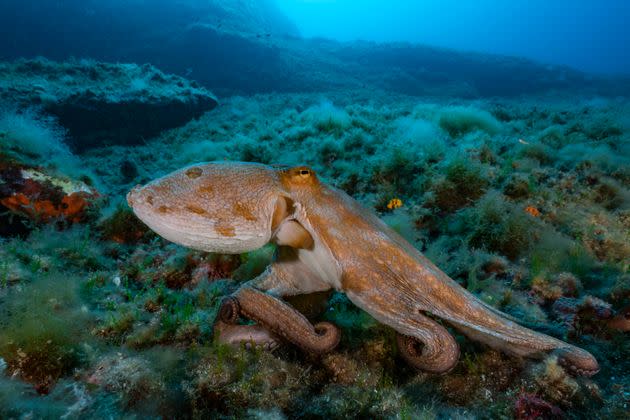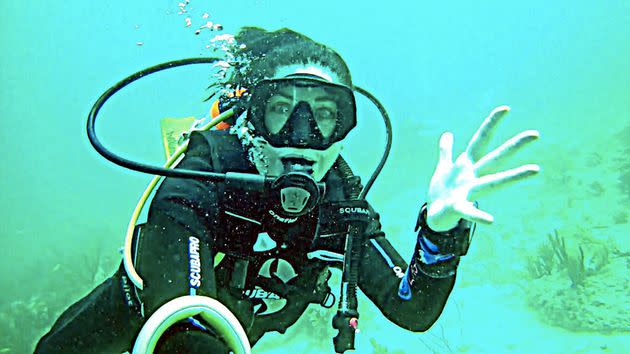'My Octopus Teacher' Was Mesmerizing But There's 1 Thing That Deeply Troubled Me

Recently, Jacinta Shackleton, a marine biologist stationed at Australia’s Great Barrier Reef, recorded a blanket octopus (the first one was spotted 21 years ago) while snorkeling. I was excited to see photos of the incredibly elusive creature, but I couldn’t stop thinking about what would have happened if someone who watched “My Octopus Teacher,” last year’s well-deserved Oscar-winning documentary, had discovered it. Would they have approached and tried to touch it?
When I watched “My Octopus Teacher,” about South African filmmaker and conservationist Craig Foster’s yearlong underwater interactions with an octopus, I was mesmerized by the fantastic footage. As a certified dive master and science teacher, however, I am concerned by the message viewers might take away from the film: that anyone can strap on weights, descend deep, and start touching creatures underwater.
I have logged hundreds of underwater hours and I know how rare it is to see an octopus or any other nocturnal sea creature during the day with good enough light to film, let alone see one leave its crevasse and move about freely. Such an experience is certainly worthy of capturing on camera. But as a teacher and human being concerned about our planet, I felt worried.
I fell in love with scuba diving when I was in my 20s and I want as many people as possible to experience the thrill of breathing underwater and witnessing creatures that seem like they could only exist in science fiction. However, I also want people to make good choices.
Foster claims that he was swimming alone while filming, but it appears to me that he had help. If he was alone, that worries me, as freediving like scuba diving is exponentially riskier when done solo.
While wearing weights and diving without training or a partner is dangerous, touching the creatures you encounter is even worse. Dive masters are constantly telling people: “Take only photos, leave only bubbles.” My concern is that most people walk away from watching this masterful film with a renewed desire for closeness with nature, but without a sense of what is appropriate for connection with wild animals.

In 1963, the Bronx Zoo had an exhibit called “the Most Dangerous Animal in the World,” and it featured just a mirror. The implication was that human beings can be (and often are) dangerous to the world around them, to each other, and to themselves. We can certainly see this play out underwater.
During one of my many dives in Cozumel, a diver was antagonizing a barracuda. We never dove with him again. His behavior was unsafe for him, for the fish and for all of us around him. If you touch a rockfish, stonefish or lionfish, you may come in contact with their venomous quills or spines, and you can be poisoned. If you accidentally scrape your leg or arm on coral, you may get coral stuck in the wound, and some types of coral are toxic. What’s more, coral is fragile, and touching or standing on it can kill it (unfortunately coral reefs are currently facing many human-caused threats). I have seen people stick their camera and fingers into a coral head or small cave to get a better photo of an eel. If an eel bites you, it cannot release its second set of jaws, called the pharyngeal jaws. Someone will have to kill the eel to remove it from you.
On the street or the beach, if someone’s dog runs up to you, you ask the owner if their pet is friendly. You ask for permission to approach or touch. When I was walking in the Canadian wilderness with tour operator Churchill Wild to see wolves and polar bears, there was a 9-year-old in our group. At one point, he crouched down ― something we had been given specific instructions not to do ― and the wolf closest to us immediately turned toward him. All of the adults quickly moved in front of the child and he stood up. Thankfully, nothing happened to him. It was a frightening and powerful reminder that when we are out of our normal habitat, we humans may not understand ― and therefore abide by ― all the rules, even if we think we know them.

 Yahoo Autos
Yahoo Autos 